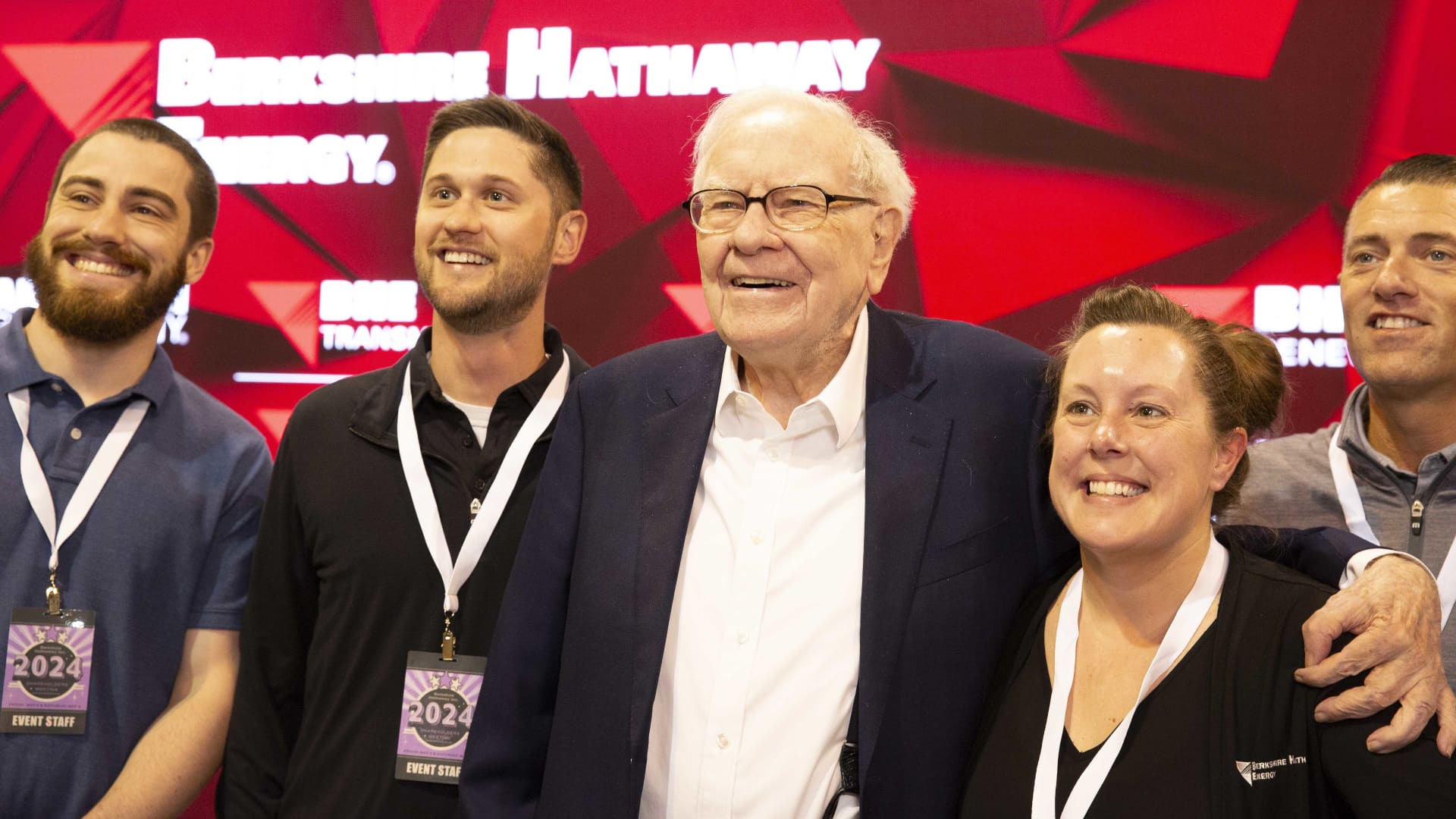Chris Gentry practices his craft very carefully – he is a professional woodworker at a small business in Brooklyn, NY that creates custom dining and coffee tables, cabinets and home furnishings.
He creates his own pieces from start to finish and enjoys this freedom. “It’s nice to have control over how something should be done,” he said.
Mr. Gentry, 36, also attaches great importance to retirement planning. He has contributed the maximum allowable amounts to his employer’s 401(k) plan over the past two years and has also funded a Roth individual retirement account. He hopes to soon buy an apartment and start a family with his partner. “It seems like this is all going to be expensive, so I’m trying to start saving for retirement early while I can,” he said. Between the two accounts, he managed to save $80,000.
His employer donates a generous 5 percent of his salary to the 401(k), no matter how much Mr. Gentry contributes. But he worries about the plan’s expensive mutual funds. “They’re expensive compared to what I can get in the IRA,” he said. He even questions whether he should even contribute to the plan. “I’m not sure how to determine at what point the fees become so high that the benefits of the 401(k) are outweighed by the fees.”
Fees are one of the most important factors in successful retirement investing. You determine how much ends up in your pocket after mutual funds and 401(k) plan providers take their share. The bite particularly hits younger workers, who are at risk of incurring high fees over time.
“Fees increase in the same way returns do,” said Scott Puritz, chief executive of Rebalance, a firm that often works with clients on 401(k) rollovers and advises companies on improving their plans. “People are numb to the differences, but they are an important factor in long-term returns.”
For plans sponsored by small businesses, like the 10-person company where Mr. Gentry works, the costs are typically much higher. His plan does not include low-cost passive index fund options. It is invested exclusively in a target fund consisting of actively managed mutual funds that have underperformed overall market returns over the last decade. The fund charges an annual expense fee of just over 1 percent.
That amount is typical for small plans, according to data compiled for the 401(k) Averages Book, which surveys companies that offer plans to employers. For example, the survey shows that for plans with 10 participants and $1 million in assets, the average investment cost is 1.10 percent. At larger companies, these fees are much lower: For companies with 1,000 to 5,000 plan participants, target-date fund fees average just 0.33 percent, according to data compiled by the Investment Company Institute and BrightScope. (Target-date funds gradually shift from stocks to bonds as a worker approaches their expected retirement date.)
It’s not uncommon for small plans to have a much higher overall cost. “We often see plans that charge a flat fee of 2 or 3 percent — sometimes even more,” Mr. Puritz said.
A primary reason fees vary is the fixed costs of administering a plan and spreading those costs across companies of different sizes. “If I have a small coffee shop plan with $100,000 in assets, the costs are spread among fewer people compared to a very large company,” said Joe Valletta, principal at Pension Data Source, publisher of the 401(k ) Averages Book. “The large plan has higher fixed costs but is spread across many more employees and a larger asset base.”
Mr. Gentry is fortunate to work for an employer that offers every type of plan. According to the Center for Retirement Research at Boston College, only about half of U.S. private sector workers are covered by an employer pension plan at any given time, and the gap is due to smaller employers’ lower participation in the system. Employees often gain and lose coverage when they change jobs.
The funding gap explains why many workers are retiring and their savings are unlikely to last for the rest of their lives. According to the Federal Reserve, average retirement savings for workers ages 55 to 64 were $185,000 in 2022.
But fees also play an important role, particularly for young workers who face the compounding effects of many years of saving. The difference in account balances when they retire can be staggering.
The New York Times worked with Rebalance to create a hypothetical example that illustrates the career-long impact of plans with different fee levels. We looked at a 28-year-old worker with a starting salary of $75,000 who diligently saves in her 401(k) account throughout her career. She pays 6 percent of her salary annually and receives a corresponding contribution of 3 percent from her employer. The scenario shows the impact of what she will have at three possible retirement ages. At age 65, their portfolio is almost 66 percent smaller in a high-cost plan compared to the lowest plan.
Determining the fees you will pay is not easy. Fees may be charged for plan administration, investments and sometimes individual services provided to participants; All 401(k) plans are required to send an annual notice explaining the fees that may be deducted from your account. Understanding these, however, is another matter.
“It is very difficult for people to understand their fees unless they are investment professionals, which most retirees are not,” said Lisa M. Gomez, assistant secretary for employee benefits security at the U.S. Department of Labor.
The Secure 2.0 legislation of 2022 directed the department to examine ways to improve plan information, including understanding fees. It is expected to submit recommendations to Congress by the end of 2025, Ms. Gomez said. The department publishes a guide to 401(k) fees and has a toll-free number with advisors who can help participants understand their fees (866-444-3272).
However, asking your employer about fees is a good place to start. “You have the right to know what you are paying. So go to your human resources department and ask them to explain your options and their costs,” said Mr. Puritz, managing director of Rebalance. The Financial Industry Regulatory Authority offers an online tool that analyzes how fees and other expenses affect the value of mutual funds and exchange-traded funds over time.
Your plan is mediocre. What now?
If your employer’s plan includes an annual matching contribution, save enough to receive it – otherwise you’ll be left with money on the table. “If they’re equivalent dollar for dollar or 50 cents on the dollar, that’s a 100 percent or 50 percent return with almost zero risk,” said Heath Biller, a financial planner at Fiduciary Financial Advisors in Grand Rapids, Michigan.
Pay careful attention to your investment decisions and look for the cheapest options. If possible, look for a low-cost index fund that tracks the entire stock market. “Even if the investment menu is stacked with expensive funds, you may be able to find an index fund or a high-quality target fund series,” said Christine Benz, director of personal finance and retirement planning at Morningstar.
You can also push for change. Mediocre 401(k) plans can get better. Employers are typically fiduciaries with a legal responsibility to consider only the interests of participants and it is in their best interest to take your concerns into account. “You can raise your concerns about high fees or poor investment opportunities with your employer and ask if the company is able to consider accommodations,” Biller said.
After you record the employer match, consider low-cost options outside of your 401(k) for additional savings. This year, you can contribute up to $23,000 to a 401(k) account and $7,000 to an IRA; Savers aged 50 and over can pay in more through catch-up contributions. Eligibility to deduct IRA contributions expires at certain income levels. Setting up a low-cost IRA also allows you to transfer funds into a single account as you change jobs throughout your career, which is a great way to stay organized.
If you have self-employment income in addition to wages, a Simplified Employee Pension IRA or Solo 401(k) offer ways to get around IRA contribution limits. Solo 401(k) accounts have higher contribution limits and are not available if you operate a business with employees; Government reporting requirements vary between these two options.
Yulia Petrovsky, a financial planner in San Francisco, has many clients who work for large technology companies that also have side businesses. “Some of them do start-up work,” she said. “Some have marketing or other consulting jobs, especially in between, so these accounts can be a real hit.”
Taxable investment accounts offer another way to avoid IRA contribution limits, especially for older retirement savers. Unlike 401(k) and IRA accounts, they offer no upfront tax benefit. Investment gains are subject to capital gains rates, which are, however, more favorable than the ordinary income tax rates imposed on withdrawals from tax-deferred accounts.
Tax deferral is less important for older investors because they have less time to benefit from the tax-deferred compounding of such accounts than younger investors.
It’s also possible to use tax-efficient investments in taxable accounts, such as broad-market stock exchange-traded funds, which have become very tax-efficient, and municipal bonds — which are generally not subject to federal income taxes — for fixed-income securities, Ms. said. Benz added.
“It’s not that difficult to simulate some of the tax-advantageous characteristics of a tax-deferred account in a taxable account,” she said.
Source link
2024-04-19 09:03:31
www.nytimes.com















